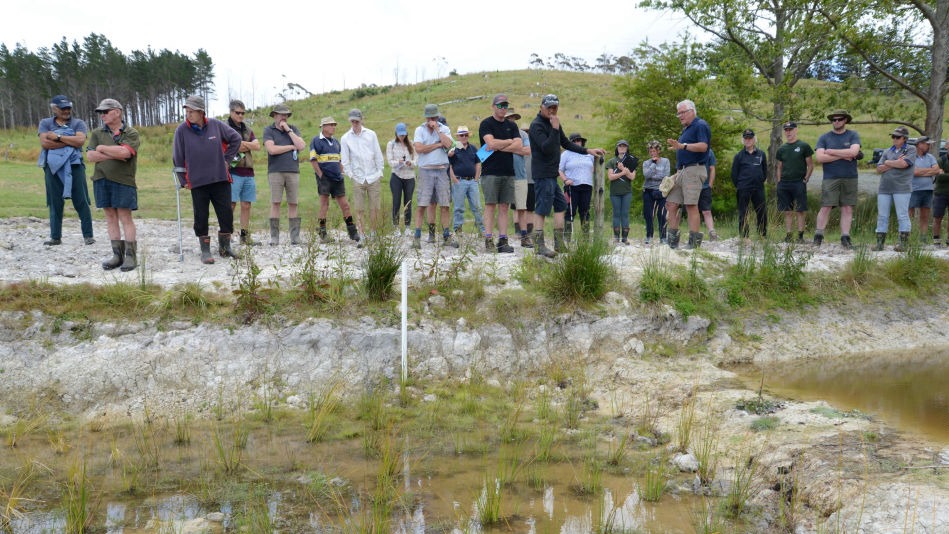Wetlands for Wellness
The Wetland Demonstration Field Day, hosted by the Piroa Conservation Trust on November 29 in Waipu, brought together 35 farmers and lifestyle block owners. The event aimed to foster discussions on the environmental and biodiversity benefits of effective wetland design. Participants explored wetland design practices on a demo site, organized under the Bream Bay Rivers Community Project, funded by the Ministry of Primary Industries.
The day commenced with an introduction from Carl, Chair of the project steering group and Graham, the project Catchment Coordinator. Insights were shared by guest speakers, including Hamish Matthews from DairyNZ, Ben Herbert from Fonterra and Nick Naysmith, Manager of the Whitebait Connection Programme delivered by the Mountains to Sea Conservation Trust.
Northland has witnessed a significant loss of 97 percent of its wetland areas due to drainage. Recognizing the vital role wetlands play in farm systems, the event emphasized the importance of protecting, restoring and creating wetlands on-farm. These initiatives help reduce nutrient losses and provide valuable habitats for native plants and animals.
Cost-effective practices to enhance wetland ecosystems were discussed, such as:
• Fencing wetlands and soaked areas to protect them from stock, allowing for regeneration and optimal functioning. This not only improves stock management but also safeguards land from flood damage while providing habitat for various species.
• Planting wetlands to increase nitrate uptake, trap sediments, and enhance habitats for native wildlife. This practice also brings shade, reduces water temperature, and minimizes the growth of weeds and algae.
• Including a sedimentation pond to capture coarse sediment, extract phosphate (for eventual reuse), and extend the wetland’s lifetime by facilitating even water flow.
The incorporation of fish passages in wetland designs was also highlighted. Good wetland design, beyond its benefits in reducing nitrogen, phosphorus, controlling sediments, and slowing flood flows, also actively supports native species such as Inanga. Nick, from the Whitebait Connection, explained how Inanga, the most common native fish caught as whitebait, relies on wetlands. Inanga spend half their lives in freshwater, migrating as juveniles into rivers and streams to grow into adults. Wetlands, serving as excellent lowland freshwater rearing sites, play a vital role in Inanga’s lifecycle. Offering a habitat for this keystone species significantly contributes to the increase in aquatic and marine biodiversity.
The event concluded with a visit of the demo-site, offering insights into different dams and the planting of native species. A barbecue provided the perfect opportunity for participants to further discuss these practices and their implementation.
For more information on well-designed wetlands, visit the DairyNZ website, which is a valuable resource.
